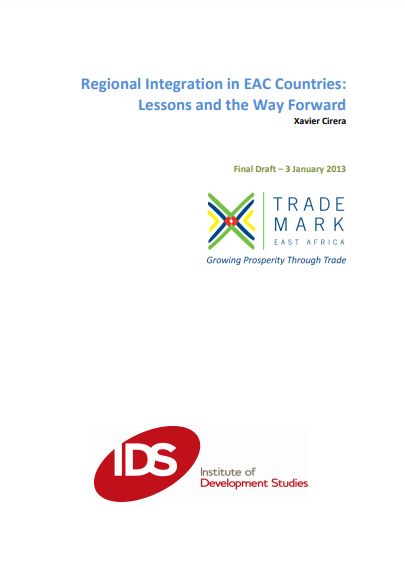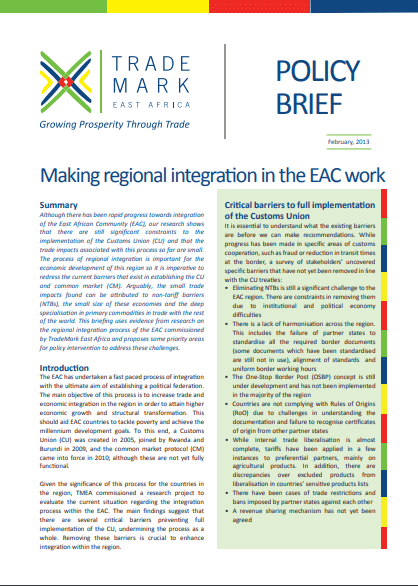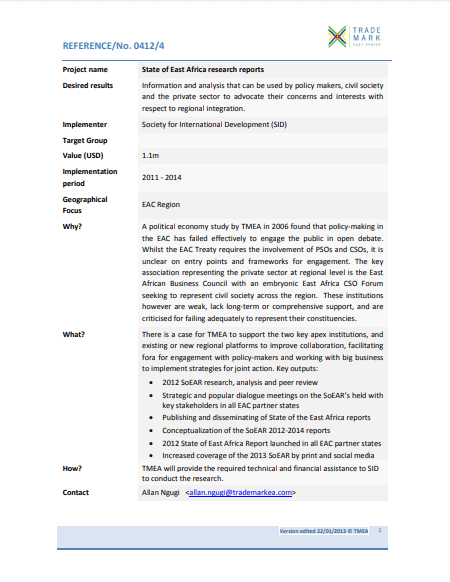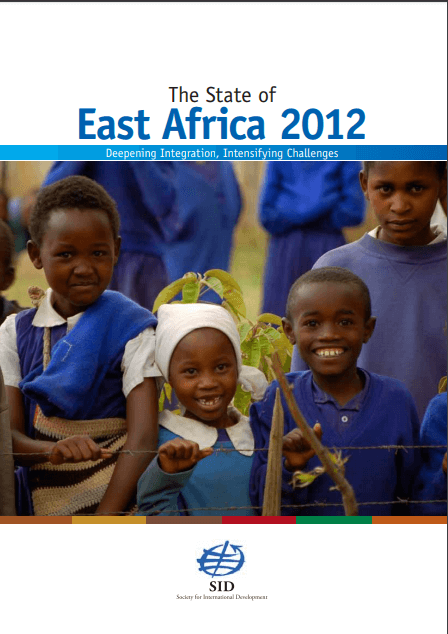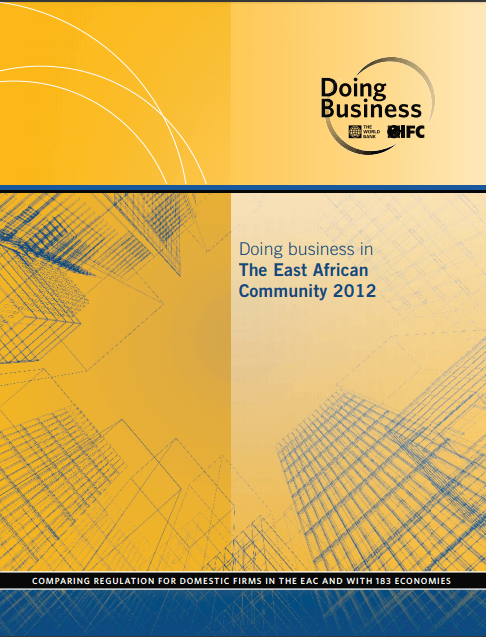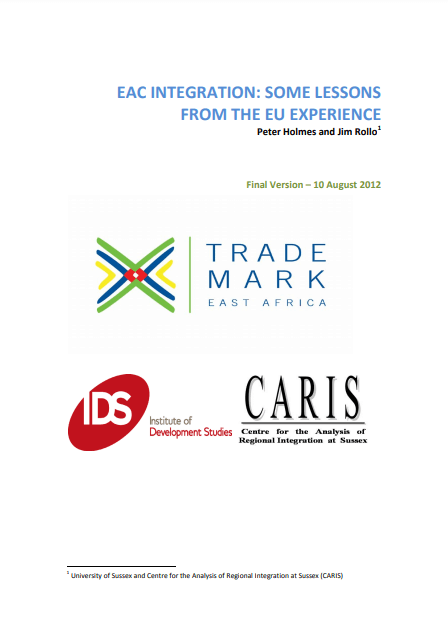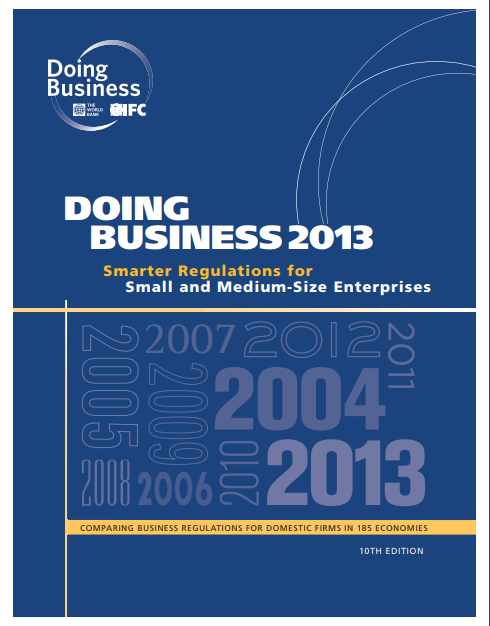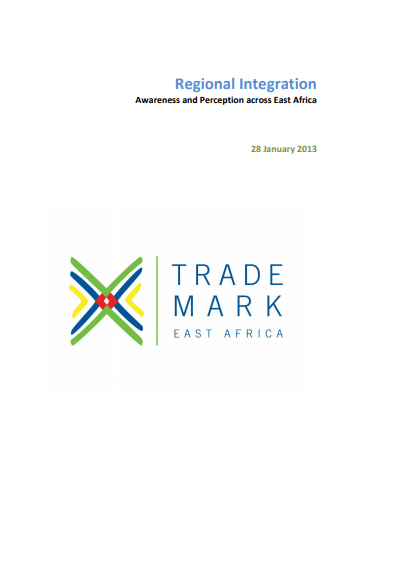The East African Community (EAC) has undertaken a fast paced process of integration whose ultimate aim is to establish a political federation. To this end, a Customs Union (CU) was created in 2005, joined by Rwanda and Burundi in 2009, and the common market protocol (CM) came into force in 2010; although these are not yet fully functional. The main objective of this process is to increase trade and economic integration in the region in view of attaining higher economic growth and structural transformation, which should aid EAC countries to tackle poverty and achieve the millennium development goals.
Regional Integration In EAC Countries: Lessons And The Way Forward
Posted on: July 2, 2014
Posted on: July 2, 2014

